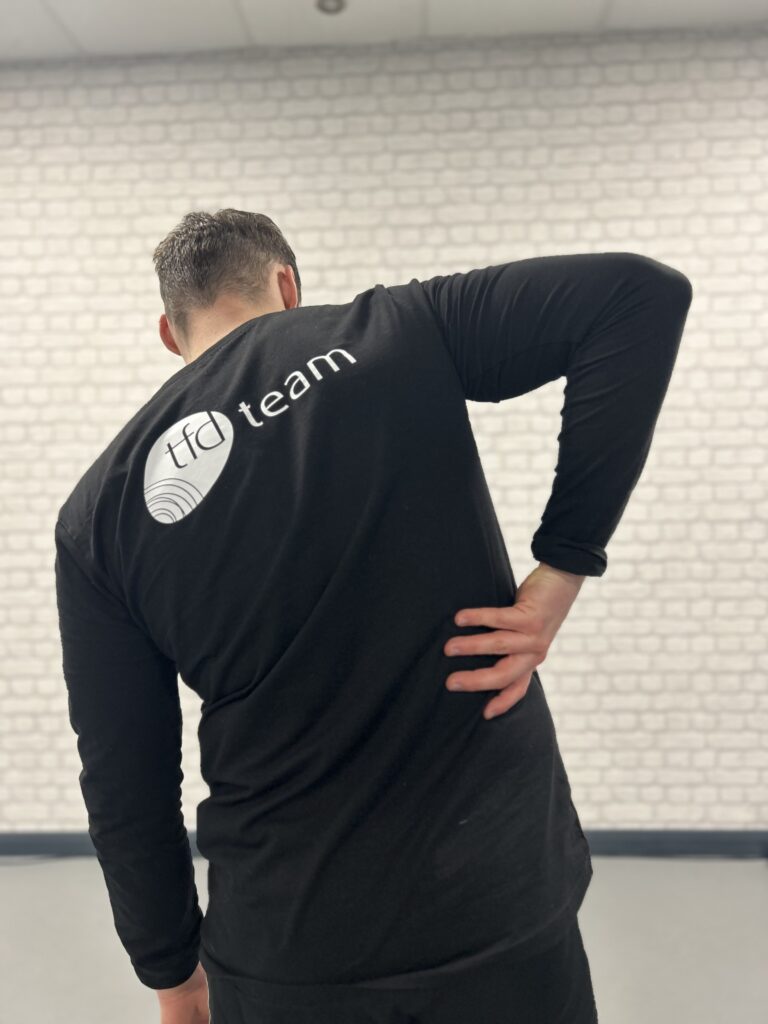What is it?
Sciatica occurs when the sciatic nerve is irritated or compressed. The sciatic nerve is a major nerve that extends from the lower end of the spinal cord (lower back), down the back of the thigh, then divides at the knee. The longest division ends at the back of the heel. Because of the sciatic nerve’s anatomy, people with sciatica can feel pain at any point along the nerve. Common places people with sciatica feel pain is the lower back, buttocks and feet.
People with sciatica often describe the pain as achy, sharp, or burning. In the past, it has been referred to as “feeling like an electric shock.” Additionally, people have described tingly or numb sensations in their feet.
Mild sciatica usually goes away over time, however there is cases where sciatica continues or worsens.
Causes and risk factors…
Sciatica occurs because of the sciatic nerve being pinched. This is usually a consequence of a herniated disk in the spine or bone spurs. In rare cases a tumour can cause pinching or pressure on the nerve.
Some risk factors for sciatica are…
- Age – Herniated disks in the spinal column usually occur more frequently in older generations, and this consequently increases risk of sciatica.
- Obesity – This can increase the pressure and load on the spine.
- Occupation – Jobs that require frequent twisting, carrying heavy loads and being sat down for prolonged periods can play a role in sciatica.
- Lack of physical activity – People who do not move as much as others are more likely to develop sciatica.
- Diabetes – This condition influences blood sugar, which can consequently cause nerve damage and sciatica.

How do you prevent sciatica?
- Exercise!!
As stated above, people who move more and exercise are less likely to develop sciatica. Exercising regularly will not eliminate your chances of developing sciatica, but it can sure help! It’s important to find a good balance between keeping the muscles around your back strong without overstressing the spine. Depending on the person, direct compression of the spine (like in a back squat) may be something you want to avoid. However, there are loads of exercises you can do in which your back will benefit without being overstressed.
- Posture
When sitting for prolonged periods, ensure you have proper desk setup and a suitable chair that provides support in the right places. It may be a good idea to adjust how you sit every so often. This ensures you are not in the same position for a long time. Something to remember is… “good posture doesn’t always mean forcing your body into positions it doesn’t want to go.” So don’t feel like you must sit perfectly upright ALL the time.
- Body Position
When doing daily tasks such as lifting, twisting, reaching and sitting. Have a think about the way in which you are performing these tasks. Are you putting yourself in a compromising position that might injure your spine? Is there a more efficient way to do the tasks?
The Slump Test…
It’s important you speak to a professional if you think you are struggling with sciatica. They will professionally diagnose you, then prescribe suitable treatment.
However, if you want something to try out on your own to see if you might have sciatica, try this:
Start by sitting down, putting your arms together at your lower back, and slumping forward. Once slumped, raise the affected leg, then gently dorsiflex your ankle (bring your toes towards you). If you feel sciatic symptoms in this position, you may have sciatica.
Speak to one of the tfd therapy team if you think you may be suffering with sciatica and they will be more than happy to help!

